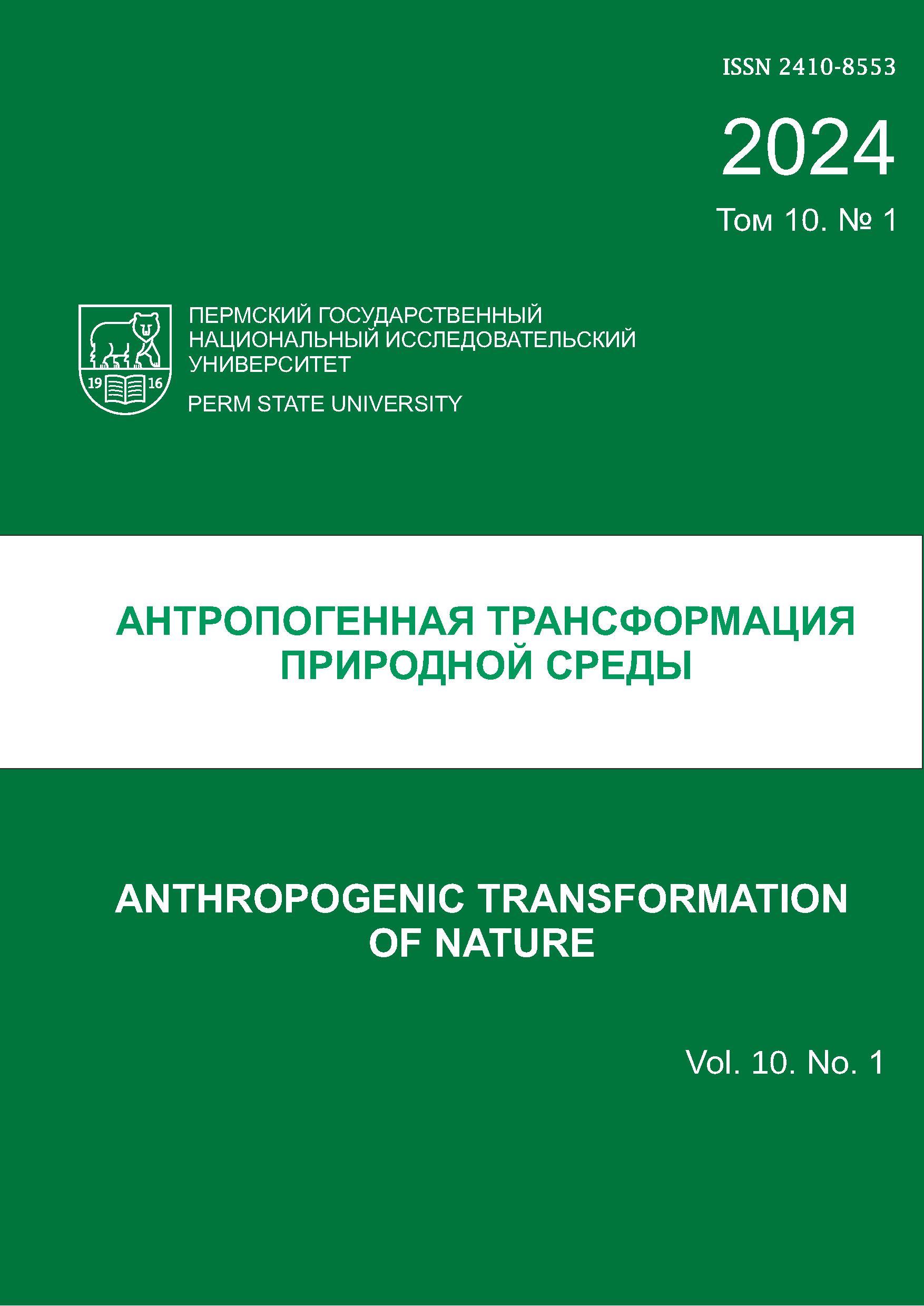Bioremediation in situ of oil-contaminated soils in the Polaznenskoe oil field area
Original paper
DOI:
https://doi.org/10.17072/2410-8553-2024-1-51-63Keywords:
bacteria, strains, soil remediation, bio-preparations, phytoremediationAbstract
The article presents the results of field research on the in situ remediation of oil-contaminated areas using phytoremediation and bioaugmentation technologies. The research was conducted in the summer-autumn period at the Polaznen oil field near the village of Zuyat in the Dobryansky city district of the Perm region. Phytoremediation and bioremediation technologies are considered to be the safest for the environment and the most cost-effective from an economic standpoint. The application of the bioremediation product "Biorec-Ra" and the sowing of seeds of black medic (Medicago lupulina L.), meadow fescue (Festuca pratensis Huds.), and perennial ryegrass (Lolium perenne L.) helped to reduce the concentration of the pollutant (petroleum hydrocarbons) to below the MAC in the first month of the experiment. Over the following month and a half, the concentration of petroleum hydrocarbons continued to decrease. This change in pollutant content was significantly different from the change in the same indicator in the control soil. Thus, the applied phytoremediation and bioremediation technologies have shown promise for this particular area.Downloads
Published
2024-06-28
How to Cite
Egorova Д., & Tashkinov Е. (2024). Bioremediation in situ of oil-contaminated soils in the Polaznenskoe oil field area: Original paper. Anthropogenic Transformation of Nature, 10(1), 51–63. https://doi.org/10.17072/2410-8553-2024-1-51-63
Issue
Section
Pollution
License
Copyright (c) 2024 Anthropogenic Transformation of Nature

This work is licensed under a Creative Commons Attribution 4.0 International License.

